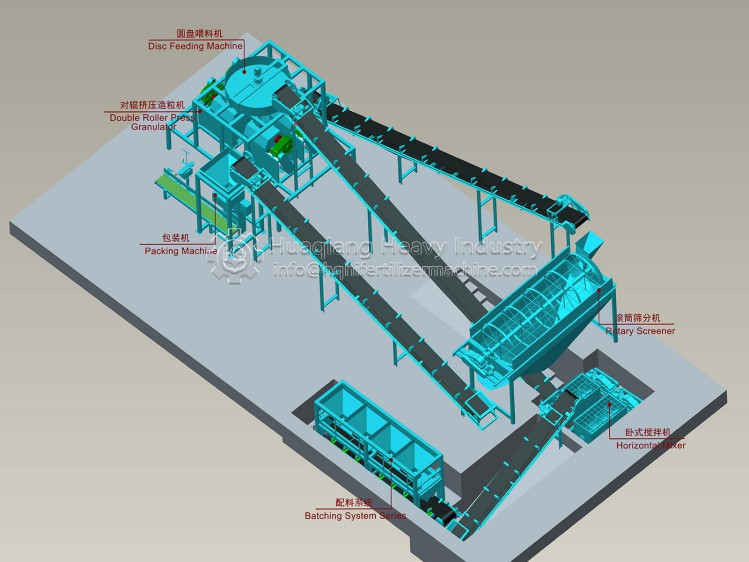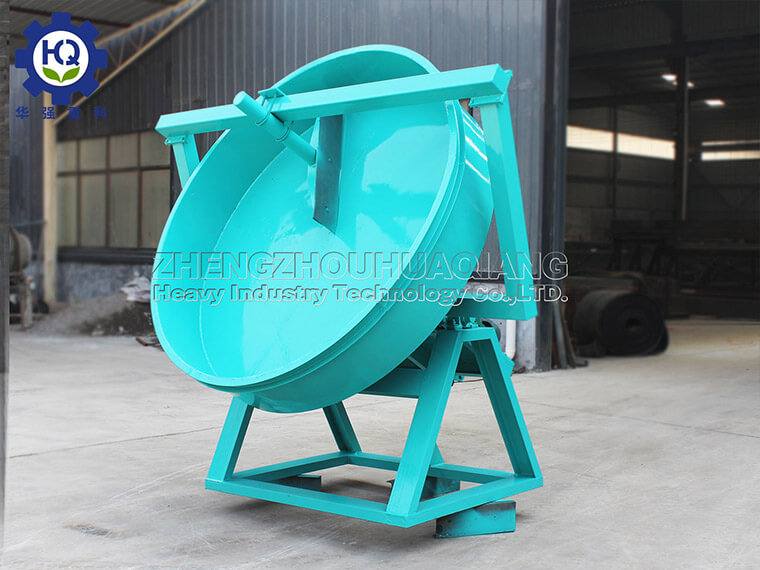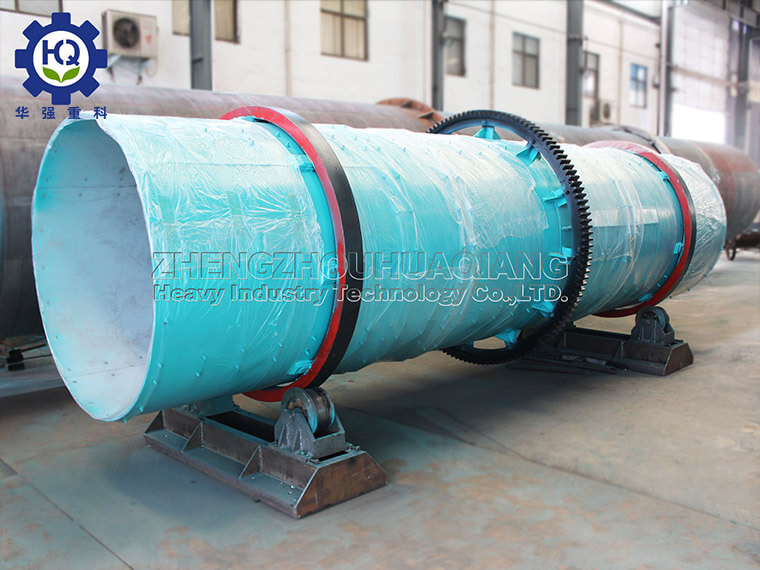The investment for the annual production line of 50000 tons of granular organic fertilizer using biogas and biogas residue is around 400000-5 million yuan. The main price difference lies in the production process of organic fertilizer. The production process of powdered organic fertilizer is simple, requiring less equipment compared to the granular organic fertilizer production line, and the price is lower..jpg)
The production line of biogas and sludge with an annual output of 50000 tons of granular organic fertilizer covers an area of:
Factory planning: 12000 square meters, including warehouse, office space, and factory area; The fermentation workshop covers an area of approximately 2400 square meters, and the warehouse covers an area of 4000 square meters.
The process flow of the annual production line of 50000 tons of granular organic fertilizer using biogas and sludge is as follows:
1. Fermentation:
Collect biogas residue raw materials, mix them with straw and other auxiliary materials to make compost, let it ferment, and use a composting machine to fully ferment the feces. Only by timely and evenly flipping can this be achieved. Some places are very dry now, while others are very humid, which will affect the quality of fermentation.
2. Crush and mix ingredients
Crush, mix, and mix the fermented materials with nitrogen, phosphorus, potassium, and other additives in a certain proportion through a material crusher and a horizontal mixer.
3. Raw material granulation
The crushed and mixed raw materials are granulated using a new organic fertilizer granulator.
4. Screening and return system
There are certain differences in the particle size of the granular materials output from the granulation and forming systems, which require screening and grading. The selected rotary screen requires low vibration, low noise, convenient screen replacement, and is equipped with a screen cleaning device.
It is recommended to equip an automatic material return system to screen out unqualified large and small particles, transport them out by a belt conveyor, crush them again, and send them to a granulator for continuous granulation, which helps to improve the continuous operation capacity of the production line.
5. Particle drying and cooling
The organic fertilizer dryer and cooler are used to further remove excess moisture from particles to meet the standard requirements for organic fertilizer moisture content.
6. Finished product packaging
The cooled granular material is transported to the finished product warehouse by a bucket elevator. Granular materials are quantitatively weighed and packaged through automatic packaging and weighing.
.jpg)
.jpg)
.jpg)
.jpg)



